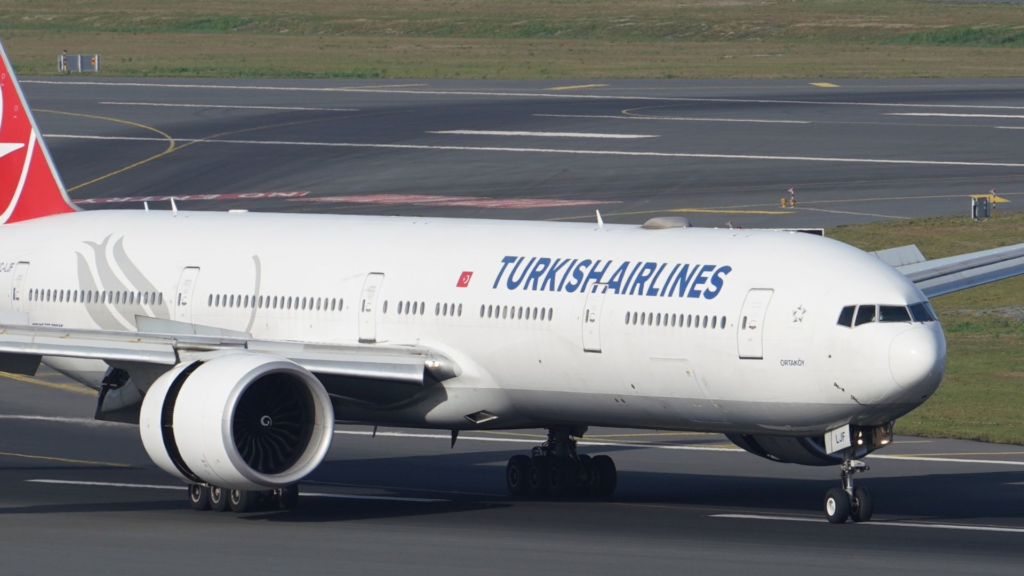Over the past few years, Turkish Airlines has consolidated its position as one of the world’s leading international carriers. The airline, which began its journey in 1933 with just five aircraft and less than 30 employees, now flies to more countries than any other carrier. Its network extends to around 130 nations and nearly 300 international destinations, but it isn’t stopping there.
Looking ahead, the airline is planning to both grow its global network and increase its fleet to more than 800 aircraft by its 100th anniversary in 2033. Much of this ambition is centered on its new mega-hub,  Istanbul Airport, which opened in 2018 and is designed to eventually handle 200 million passengers a year.
Istanbul Airport, which opened in 2018 and is designed to eventually handle 200 million passengers a year.
Turkish Airlines Leveraging The Hub To Maximize Connectivity And Efficiency
Turkish Airlines today dominates the airport and holds close to 80% of the market share. Indeed, this dominance has helped transform the hub into the most connected airport in the world. According to Airports Council International (ACI) Europe’s 2025 Airport Industry Connectivity Report, Istanbul overtook Frankfurt to claim the top global spot for hub connectivity. Much of this success comes from Turkish Airlines’ use of the hub-and-spoke model.
The strategy has allowed the airline to establish a dense global network around the airport while offering competitive fares. The majority of its flights connect through Istanbul, which enables it to maximize passenger loads and maintain operational efficiency. Besides, geography adds to this advantage. Turkey is positioned at the crossroads of Europe, Asia, and Africa, allowing for shorter connecting times across a wide range of markets.
In an exclusive interview with Simple Flying’s Tom Boon, Prof. Ahmet Bolat, Chairman of the Board, Turkish Airlines, said:
“Istanbul’s unique location enables us to capture a significant share of global connecting traffic, with nearly 60% of our international guests transferring through our hub. This hub advantage not only supports the scaling of our operations but also ensures that incremental capacity is efficiently absorbed.”
How Turkish Airlines Uses Its Hub To Serve Underserved Regions
Furthermore, the scale of the airport has allowed Turkish Airlines to pursue a unique mix of destinations. Using the same hub-and-spoke model, the ![]() Star Alliance member serves major cities, as well as connects secondary markets that many carriers overlook. It has built up a dense presence across Europe, North America, East Asia, and Australia, while continuing to fly into parts of the Middle East and Africa which are largely avoided by European carriers due to limited demand or safety concerns.
Star Alliance member serves major cities, as well as connects secondary markets that many carriers overlook. It has built up a dense presence across Europe, North America, East Asia, and Australia, while continuing to fly into parts of the Middle East and Africa which are largely avoided by European carriers due to limited demand or safety concerns.
At the same time, it continues to expand in more established regions. For instance, in Europe, where Turkish Airlines already has a strong presence, it added a new daily nonstop route from Istanbul to Seville this month. In North America, the carrier has been weighing several secondary gateways. These include Minneapolis, Charlotte, Philadelphia, and Orlando. The Minneapolis launch was originally scheduled for spring 2025 but has yet to begin.
Much of this strategy is about leveraging Istanbul’s reach to tap into markets that lack extensive direct international service. As Bolat explained, “We continuously evaluate underserved regions where Turkish Airlines can add value, while also strengthening our presence in established markets by increasing frequencies…Each new route is carefully selected to enhance our global network and to support our vision of connecting more countries than any other airline. Even in challenging markets, if we see clear opportunities to create value for our guests and expand global connectivity, we are willing to invest and grow.“
Turkish Airlines’ Growth Is Backed By Its Hub
Indeed, the new Istanbul Airport has been central to Turkish Airlines’ recent growth. For decades, the airline operated from Atatürk Airport, which served as its primary international hub but had reached capacity limits. On April 6, 2019, all scheduled passenger flights were relocated to the new airport, which allowed the carrier to expand its operations on a much larger scale.
Since then, Turkish Airlines has expanded rapidly. Last year, it added Melbourne and Sydney, marking its first services to Australia. In addition, new destinations such as Denver and Santiago also joined the network. Looking ahead, Bolat confirmed that Phnom Penh in Cambodia and Bissau in Guinea-Bissau are among the next cities to join the map.
Of course, this network growth is supported by a rapidly expanding fleet. According to ch-aviation data, Turkish Airlines currently operates 497 aircraft and expects to cross the 500 mark by the end of 2025. Long-term, the carrier is targeting a fleet of 800 aircraft by 2033.





